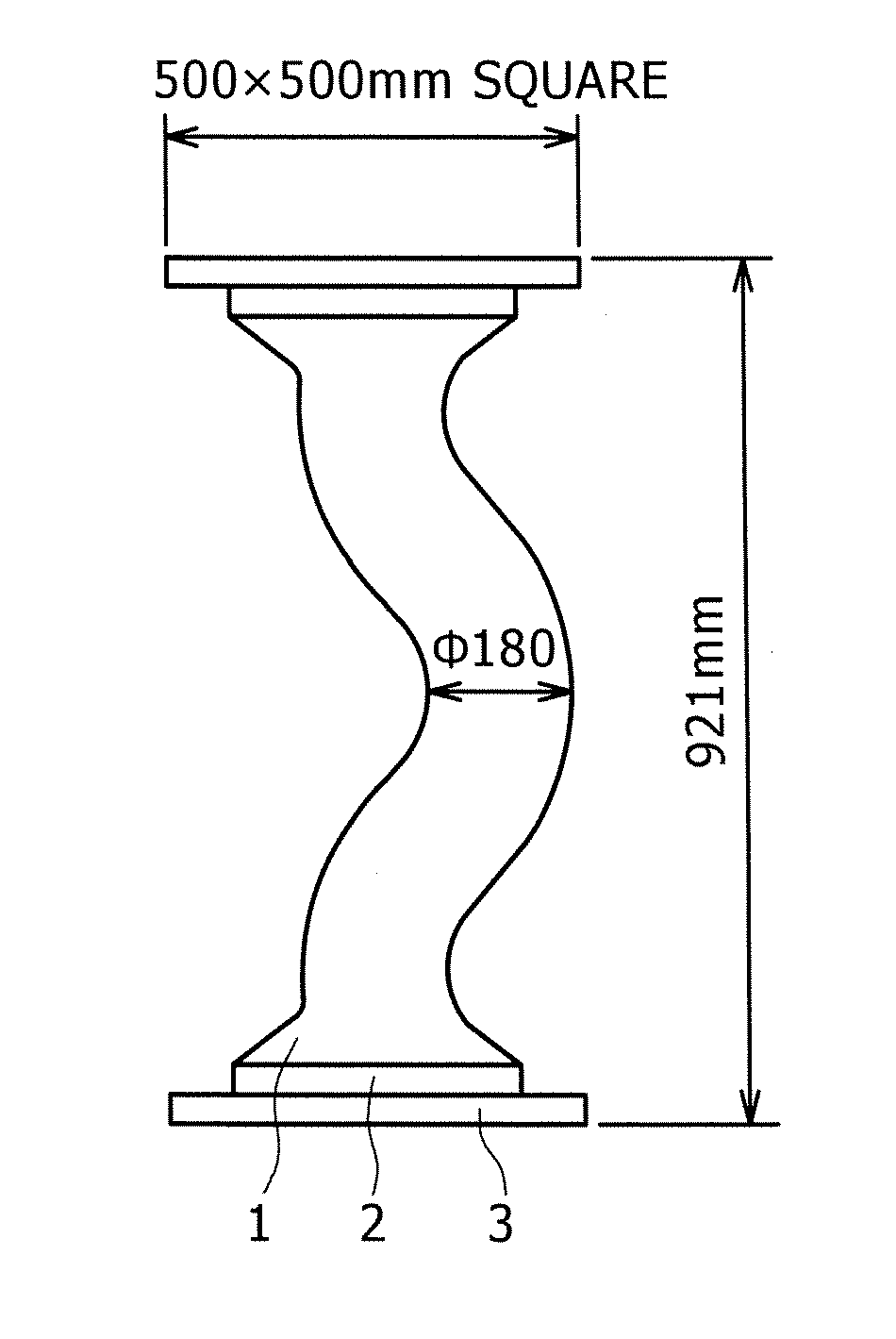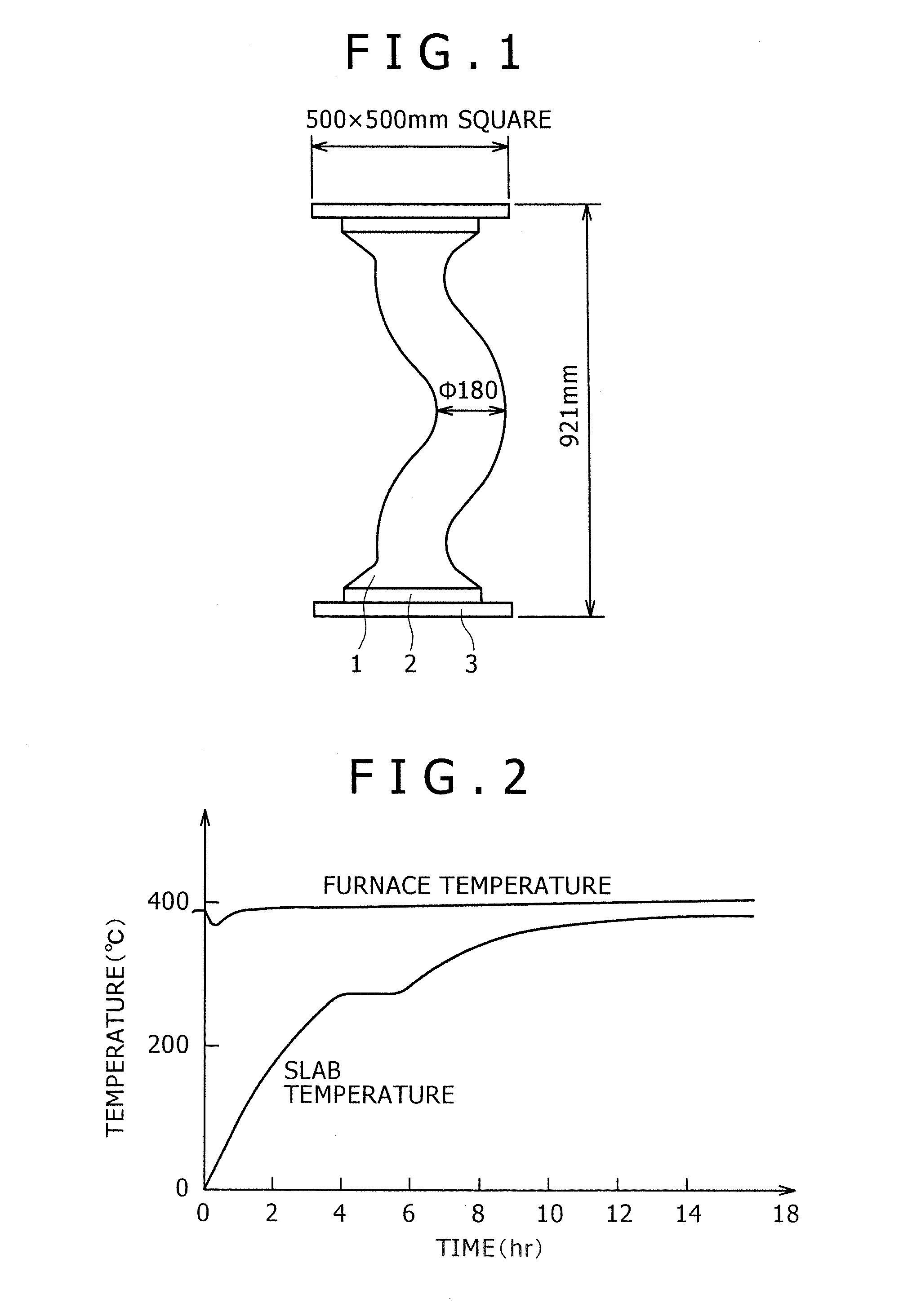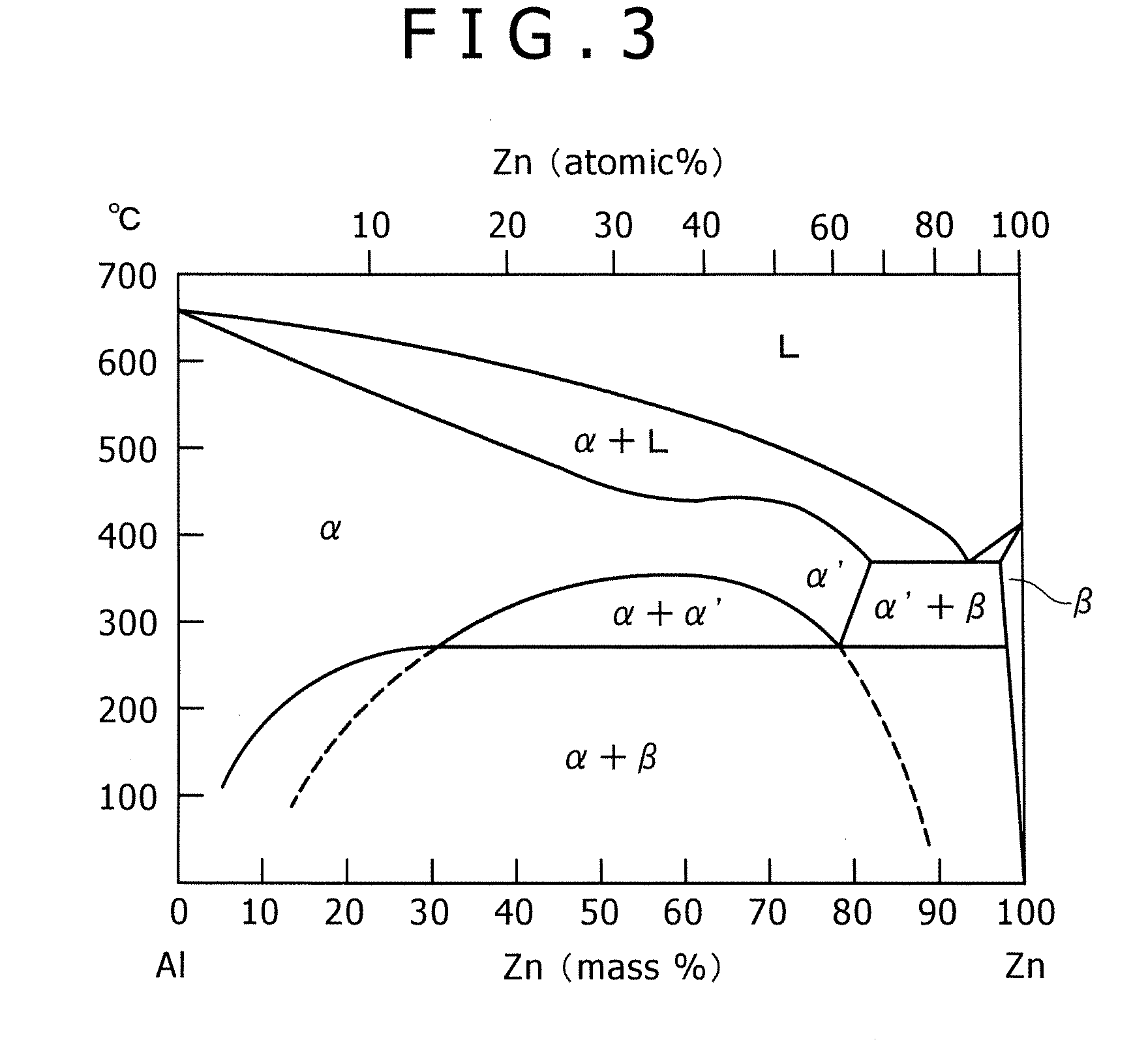Zn-Al Alloy Having Excellent High-Speed Deformation Properties and Process For Producing the Same
a technology of al alloy and high-speed deformation, which is applied in the field of zn-al alloy, can solve the problems of reducing energy absorption capacity, deteriorating vibration-proof rubber, and unsuitable for use, and achieves excellent static deformation
- Summary
- Abstract
- Description
- Claims
- Application Information
AI Technical Summary
Benefits of technology
Problems solved by technology
Method used
Image
Examples
example 1
Preparation of Zn—Al Alloy
[0069]Various ingots (each weighing 180 kg) of Zn-22% Al alloy (with less than 0.5% impurities in total) liable to macrosegregation were prepared by casting into an air-cooled or water-cooled iron or copper mold measuring 200×350 mm in cross section, except that sample No. 12 (shown in Table 1) was prepared by continuous casting into a water-cooled copper mold measuring 200×200 mm in cross section.
[0070]The cooling behavior of each ingot was observed with a thermocouple placed in each ingot at the center of the cross section 300 mm above the bottom. FIG. 4 shows cooling curves representing the temperature change with time in the ingot. From the cooling curves were calculated the average cooling rate 1 in the solid-liquid dual phase region (425-375° C.) and the average cooling rate 2 at the temperature (275-250° C.) at which the β phase begins to precipitate. Incidentally, the melt was isolated from the ambient atmosphere during casting by keeping the mold i...
PUM
| Property | Measurement | Unit |
|---|---|---|
| Grain size | aaaaa | aaaaa |
| Grain size | aaaaa | aaaaa |
| Temperature | aaaaa | aaaaa |
Abstract
Description
Claims
Application Information
 Login to View More
Login to View More - R&D
- Intellectual Property
- Life Sciences
- Materials
- Tech Scout
- Unparalleled Data Quality
- Higher Quality Content
- 60% Fewer Hallucinations
Browse by: Latest US Patents, China's latest patents, Technical Efficacy Thesaurus, Application Domain, Technology Topic, Popular Technical Reports.
© 2025 PatSnap. All rights reserved.Legal|Privacy policy|Modern Slavery Act Transparency Statement|Sitemap|About US| Contact US: help@patsnap.com



